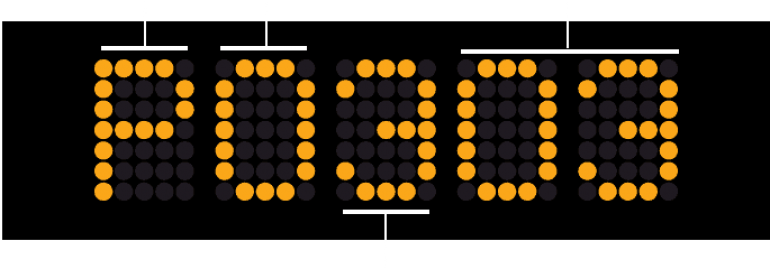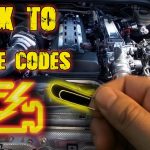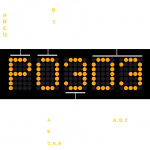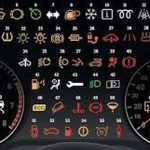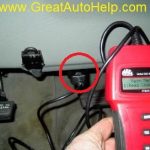If you have trouble reading car computer codes, you might have trouble identifying which codes are what. Luckily, there are several ways to identify them. These methods include following an online shop manual, which includes a full diagnostic procedure. The manuals walk you through the testing process step by step and even provide component locators. You will need a code reader and scanner to perform the testing, as well as a computer with internet access.
OBD2 codes
OBD2 car computer codes are an essential part of your vehicle’s self-diagnostic system. These codes indicate malfunctions and are necessary to properly diagnose any vehicle problem. They are also known as Diagnostic Trouble Codes, or DTCs. Whether you’re a mechanic or just a driver, learning to recognize OBD2 codes can help you maintain your vehicle. Here are some things you need to know.
OBD2 car computer codes come in different categories. Some codes are generic and can be found in any vehicle. P-codes, for example, are related to the engine, transmission, fuel system, and other components. Other codes are manufacturer specific. You can find them by searching online or in your owner’s manual. You can also refer to your vehicle’s manual for further details. If your car’s trouble code is B, it indicates that the problem is related to the passenger compartment. While C-codes pertain to other car systems, they are not necessarily specific.
A common mistake that people make when troubleshooting an OBD2-compliant vehicle is assuming that they have a complex code. In fact, it is very common for these codes to be mistakenly assumed to be complicated and difficult to solve. If you are not familiar with them, try viewing videos produced by nonda Auto DIY Center. These videos can help you identify and fix the problem in your car. If you’re unsure of how to interpret them, try watching nonda Auto DIY Center’s videos on DTC codes.
In addition to being universal, OBD2 cars comply with Euro V and VI standards. Certain light vehicles in China, however, must comply with the new standard. Some regional exemptions may apply, but in general, all vehicles must comply with the standard by July 2008. In addition to the above, in 2010 select commercial engines will be required to meet HDOBD specifications. A common problem code will be “Pxxxx” and will indicate the powertrain system.
SAE codes
The first of the four-digit SAE codes for a car computer is the MID. MID stands for Message Identifier and indicates which system’s signal is responsible for the problem. In the case of a car computer, the MID of an engine or transmission component will be indicated by MID 218. The next four-digit SAE codes represent the system’s diagnostic trouble codes. This table shows the different types of SAE codes.
The J1939 standard specifies a protocol that allows various CAN components to communicate with each other to exchange data about the health of a vehicle. The standard was developed by the Society of Automotive Engineers. It consists of various subcommittees, including the Truck and Bus Control and Communications Subcommittee. The J1939 protocol serves as a foundation for design of ECUs and network topology.
The “P” and “A” codes refer to different car computer issues. Codes beginning with P0 and “P1” are generic and apply to all cars. P0 and P1 are powertrain-related codes, while “1” and “M” codes pertain to fuel or air metering systems. If the code is for a mass air flow sensor, it will be indicated by a manufacturer-specific code.
While the P and M codes refer to the faulty parts, the “U” and “A” codes relate to systems in the car. While the “O” codes are specific to the car computer, the ‘U’ code refers to the network communications wiring bus. These codes are also important for diagnosing a problem with your car. The trouble code may have several meanings. By understanding the code, you can minimize downtime associated with it.
Manufacturer-specific codes
If you need to diagnose your vehicle’s computer system, you need to learn how to read manufacturer-specific car computer codes. Although a vehicle manufacturer isn’t required to support all of these modes, if your car has trouble codes, you should visit a nearby auto parts store and have a salesperson read them for free. These employees are trained to sell you parts and can diagnose your car problems. However, if you’re a do-it-yourselfer, you can use a diagnostic tool to do the job yourself.
The most common codes are P0782 and C0782. The first letter of the code represents the powertrain and generic transmission systems, while the last three digits identify the specific vehicle system or circuit. OBD II codes monitor the fuel-air ratio in the car’s engine and other factors, including emissions and fuel economy. Fuel injector codes, for example, are caused by problems with the car’s fuel-injection system. Spark plug problems can trigger ignition codes.
Manufacturer-specific car computer codes are used by auto repair technicians to troubleshoot engine problems and determine if they need more extensive repairs. The OBD2 standard, introduced in 1996, was meant to make cars more efficient and less polluting. It also regulates emissions, and if a car fails to meet the law, a warning light will appear on the dashboard. The DTC codes were developed by the Society of Automotive Engineers, or SAE, which is now known as SAE International. Most cars made after 1996 will use an OBD-II-compliant system.
Trouble codes are part of a car’s self-diagnostic system. They indicate the location of a problem, and help auto mechanics diagnose the issue. However, they can also be used to identify pending or permanent problems. The codes are numbered and accompanied by instructions to help the mechanic determine the most likely cause of the problem. This means that you can use the codes in conjunction with a manual or manufacturer-specific guide to diagnose a car.
Symptoms of a code
Among the symptoms of car computer problems are engine misfiring and transmission-related code. These are indicators of a variety of issues ranging from sensor failure to transmission problems. When your vehicle displays a code that begins with “P,” take action to correct the problem. This is where a professional mechanic comes in. In addition to diagnosing the cause of the code, a professional can help you determine what to do next.
The first symptom is a check engine light that indicates a problem with the EGR system. This system regulates combustion temperatures and nitrogen oxide output. While most drivers don’t experience any measurable problems with their EGR system, some do notice fuel economy loss, rough idling, and pre-ignition knocking. An EGR trouble code can be caused by a variety of problems, including a clogged catalytic converter, electrical problems in the EGR circuit, and problems with the engine computer.
Another symptom of car computer codes is an engine that runs lean. In other words, the engine is receiving too much air while not receiving enough fuel. It may exhibit a check engine light as a result, or a hesitant and rough idle. Symptoms of car computer codes may also include a faulty MAF sensor, a weak fuel pump, or a failed fuel pressure regulator. If you suspect your car of running lean, take it to a qualified mechanic who can diagnose the problem and make the necessary repairs.
Other car computer codes might appear when your spark plug is shorting. This is the most common cause of such a code. While the computer cannot directly sense the shorted spark plug, it reads the extra oxygen flowing through the unburned cylinder. It interprets this extra oxygen as an overlean condition and tries to correct the problem by adjusting the mixture. However, this won’t remove the extra oxygen. Moreover, a careless tech may misunderstand the meaning of this code, thinking that the O2 sensor is defective.
How to interpret a code
Generally, there are three main categories of trouble codes in cars: generic (P-codes for common vehicle problems) and manufacturer-specific (P-codes for specific car manufacturers). A DTC’s first digit will tell you whether the code is generic or manufacturer-specific. A second digit, if any, will give you information about the specific area of the vehicle affected. For example, if the DTC shows P03, the issue is in the powertrain, such as the engine or the transmission. The last digit (P08), however, will tell you whether the problem is related to the vehicle’s transmission, air conditioning, or the mass air flow sensor.
OBD1 and service engine lights are often accompanied by the check engine light. A check engine light flash is a sign of a fault code. When it flashes, the engine light has a pulse, and the pause in between represents a digit. A short pulse, such as the one in a vehicle fault code 32, means that the engine’s computer is detecting a malfunction or an issue.
OBD codes are created by the Society of Automotive Engineers (SAE), an organization of engineers that designs and manufactures vehicles. While these codes are generally standard, some manufacturers add their own codes for their vehicles. They are generally labeled P0 and P2, or generic and manufacturer-specific (B1 and P2-P30-P33), and ‘C1’ is the code used for a specific car manufacturer.
Onboard diagnostic systems, or OBD, are computers inside your car that track its performance and produce DTCs. If the system you’re using has malfunctioned, this code will tell you exactly what’s causing the problem. An OBD scanner will tell you which problems are affecting your vehicle, so it’s imperative that you know how to interpret these codes. Otherwise, you may find yourself with a faulty car.


